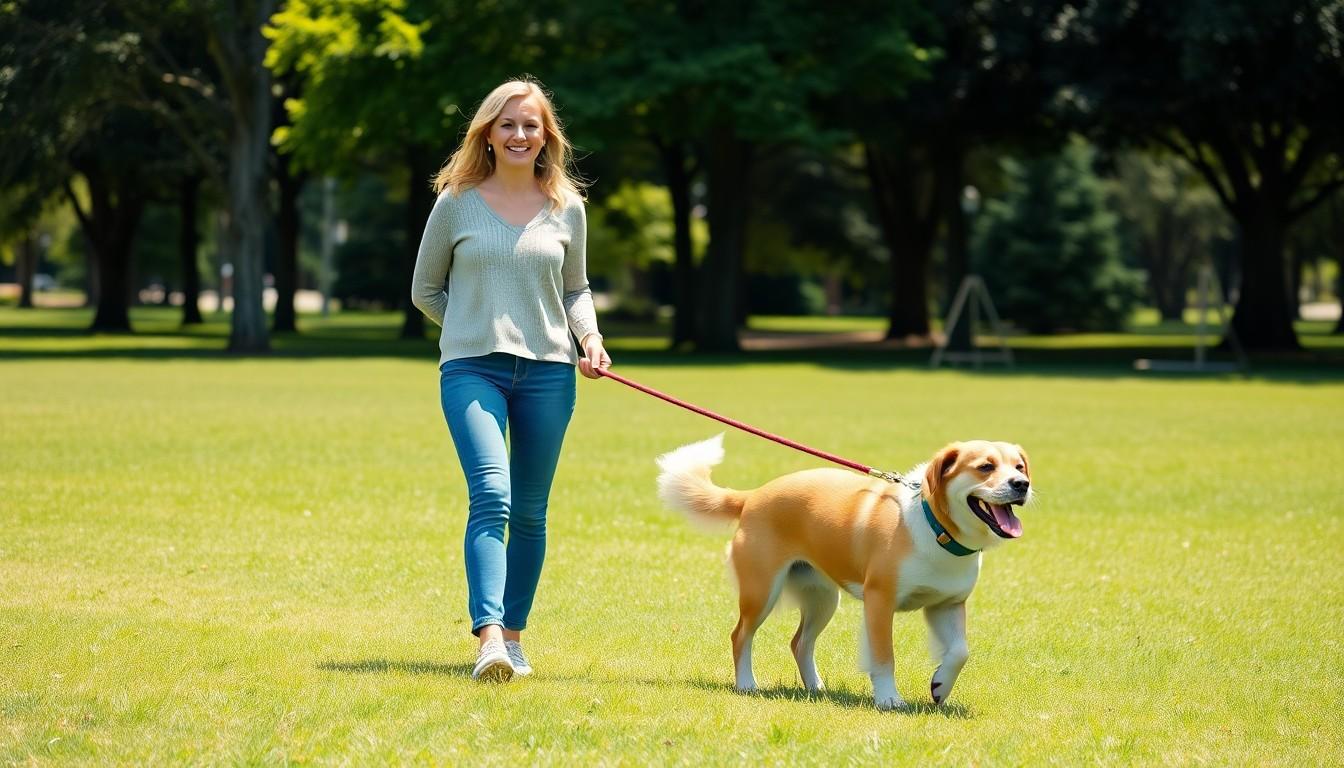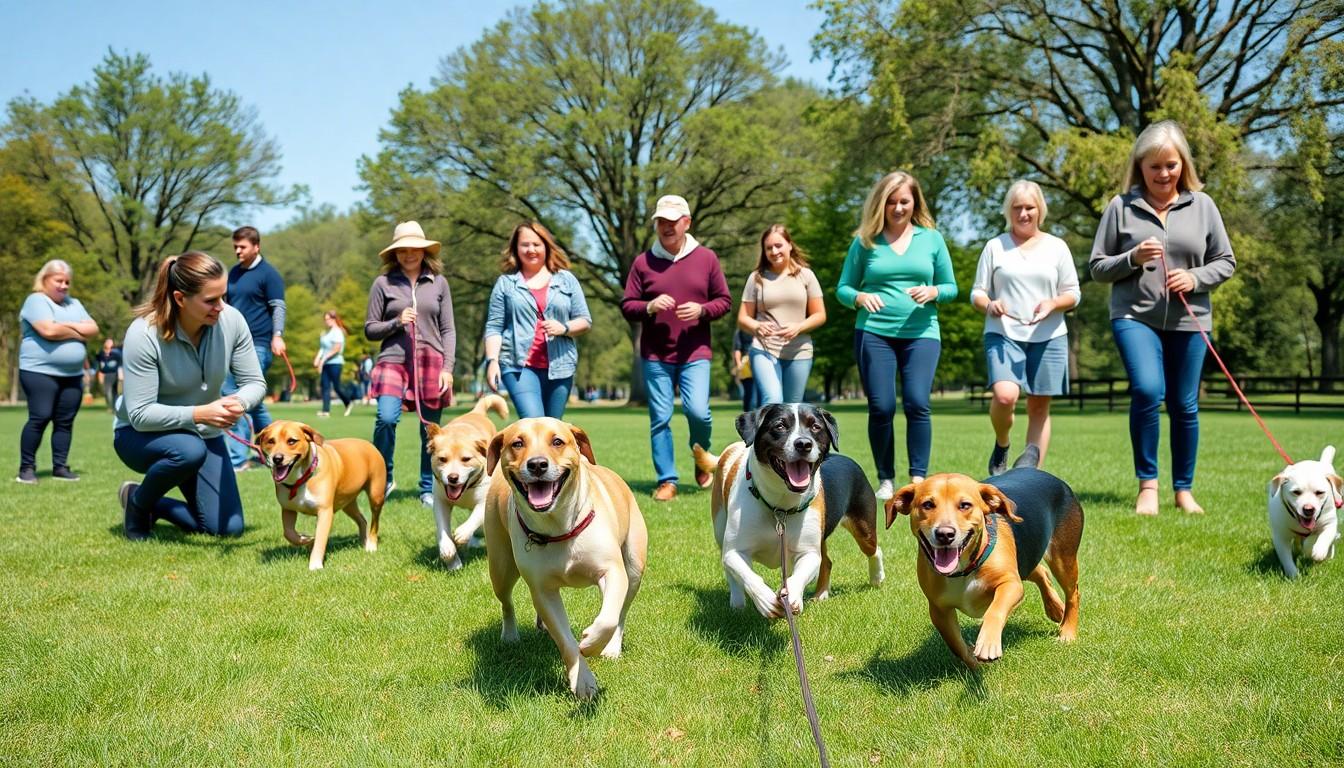When it comes to keeping our furry friends happy and healthy, the AWR’s dog exercise program is no barking matter. This initiative isn’t just a walk in the park; it’s a structured approach to ensure dogs get the exercise they need to thrive. But what’s the scoop on this program? Is it all about fun and games, or is there a serious side to it?
Overview of the Dog Exercise Program
The dog exercise program mandated by the Animal Welfare Regulations (AWR) plays a crucial role in ensuring the physical and mental well-being of dogs. Designed as a structured initiative, the program outlines specific requirements for exercise based on the needs of individual dogs. Providing daily exercise opportunities is essential for maintaining their overall health and happiness.
Exercise routines must include various activities to engage dogs physically and mentally. Walks, playtime, and interactive games promote essential social behaviors and physical fitness. Additionally, the program emphasizes the necessity of tailoring exercise to accommodate dogs of different breeds, ages, and health conditions.
Facilities must adhere to defined standards while implementing the exercise program. Sufficient space and equipment are essential for safe and effective exercise sessions. Compliance with these regulations ensures that all dogs receive adequate physical activity, which helps mitigate behavioral issues and promotes positive interactions.
Documentation of exercise activities is also crucial. Records must indicate the frequency and type of exercise provided to each dog, ensuring transparency and accountability. Such records help shelters or organizations track the health and activity levels of the dogs in their care.
Ongoing assessments of each dog’s condition are necessary to adapt the exercise program as needed. An individualized approach allows for adjustments based on factors such as energy levels or health changes. As a result, the program creates a sustainable and nurturing environment for all dogs involved.
Purpose of the AWR Mandate

The AWR mandate serves to promote the well-being of dogs in care. This initiative supports their physical and mental health by implementing a structured exercise program.
Enhancing Dog Welfare
Enhancing dog welfare requires consistent exercise that meets each dog’s specific needs. Activities designed for engagement include daily walks, play sessions, and interactive games. Regular exercise fosters positive social behaviors among dogs, decreasing stress and improving overall well-being. Mental stimulation plays a crucial role in this program, keeping dogs engaged and happy. The AWR mandates facility standards, ensuring safe environments for exercise. Transparency in documenting exercise activities keeps caretakers accountable. Thus, dogs receive the care they need for a healthy lifestyle.
Legal Requirements for Owners
Legal requirements hold dog owners accountable for adhering to the AWR’s mandates. Owners must ensure their dogs engage in regular exercise as prescribed by regulations. Specific documentation, including activity logs, is essential for proving compliance. Facilities are responsible for training staff to implement exercise programs effectively. Inadequate execution can lead to fines or penalties, emphasizing the importance of adherence. Owners must also participate in ongoing assessments to gauge their dogs’ needs, ensuring a responsive care approach. Prioritizing these legal requirements improves the overall welfare of dogs under their care.
Key Features of the Program
The AWR’s dog exercise program focuses on providing tailored activities that promote the overall health of dogs in care. This structured initiative emphasizes both fun and necessity in maintaining exercise routines.
Types of Exercises Recommended
Walks are a primary recommendation, serving as a fundamental exercise that fosters cardiovascular health. Playtime, which includes fetching or tug-of-war, promotes physical fitness and social interaction. Interactive games encourage mental stimulation, preventing boredom and anxiety. Facilities must incorporate a mix of these activities to address various dog temperaments and energy levels. Regular participation in such diverse exercises enhances dogs’ well-being and strengthens the bond between dogs and caregivers.
Frequency and Duration of Exercise
Daily exercise is essential, ensuring that dogs receive adequate physical activity. Ideally, sessions should occur at least twice each day, maintaining consistency. Each exercise session must last a minimum of 30 minutes, catering to the dog’s energy needs and preferences. Ongoing assessments help to adjust these durations and frequencies based on individual conditions, ensuring each dog thrives. By adhering to these guidelines, facilities can better care for the physical and mental health of dogs in their programs.
Benefits of the Dog Exercise Program
The dog exercise program mandated by the AWR offers significant advantages for dogs in care. These benefits include enhancements in physical health and behavioral improvements.
Physical Health Improvements
Daily exercise directly contributes to enhanced cardiovascular health. Engaging in activities like walks for at least 30 minutes a day reduces the risk of obesity. Strengthened muscles and bones arise from regular physical activity, promoting longevity. Structured exercise routines also improve joint flexibility and function, particularly in older dogs. Increased metabolism from consistent exercise helps maintain healthy weight levels. Dogs that remain active experience fewer health issues, such as diabetes or heart disease. Additionally, exercise aids in digestion, ensuring overall well-being and vitality.
Behavioral Enhancements
Structured exercise promotes positive social behaviors among dogs. Engaging in interactive games fosters confidence and reduces anxiety. Socialization during walks helps dogs learn appropriate behaviors around other animals and people. Many dogs demonstrate reduced aggression and increased friendliness when regularly exercised. Enhanced response to training occurs as physical activity improves cognitive function. Dogs that receive ample exercise often exhibit fewer behavioral problems, such as chewing or barking. Increased mental stimulation from varied exercises keeps dogs engaged and well-adjusted, leading to happier lives.
Challenges and Considerations
Implementing the dog exercise program mandated by the AWR presents several challenges that dog owners and facilities must navigate effectively.
Compliance by Dog Owners
Dog owners face specific legal obligations under the AWR. Adherence to exercise requirements is essential for maintaining compliance. Documentation of exercise activities must happen regularly to provide proof of compliance. This accountability promotes responsible pet ownership while ensuring that dogs receive necessary exercise. Coordination between owners and facilities supports the successful execution of these requirements. Training for dog owners and staff also enhances consistency in program implementation. Non-compliance can lead to penalties, making it crucial for all parties to stay informed about the regulations.
Resource Availability
Resource availability plays a vital role in the effective implementation of the exercise program. Facilities must have access to adequate space for safe exercise activities. Outdoor areas should be spacious and secure, allowing dogs to engage in various activities freely. Staff training is essential, ensuring they possess the skills to facilitate appropriate exercise routines. Financial resources for equipment like leashes, toys, and agility tools also contribute to program effectiveness. Limited resources may hinder a facility’s ability to follow AWR guidelines. Prioritizing resource allocation will enhance overall program efficiency and ensure dogs receive the best exercise opportunities.
Conclusion
The AWR’s dog exercise program stands as a vital initiative for promoting the health and happiness of dogs in care. By mandating structured exercise tailored to individual needs, it ensures that dogs receive the physical and mental stimulation necessary for their well-being. The program not only fosters positive behaviors but also mitigates health risks associated with inactivity. Adhering to these guidelines is essential for responsible pet ownership and enhances the bond between dogs and their caregivers. With proper implementation and ongoing assessments, facilities can create a nurturing environment that prioritizes the welfare of every dog





